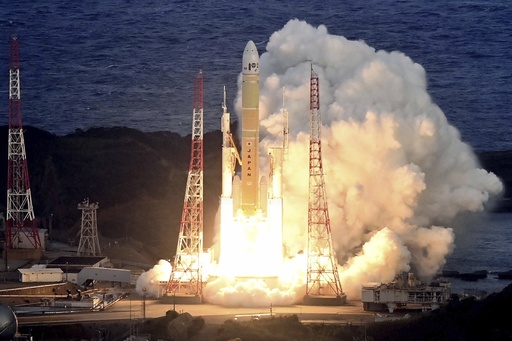TOKYO — On Sunday, Japan’s space agency announced the successful launch of a navigation satellite aboard its H3 rocket, marking a significant step in the country’s aim to create a more accurate and independent location positioning system.
The H3 rocket, transporting the Michibiki 6 satellite, took off from the Tanegashima Space Center, located on a southwestern island in Japan.
According to Makoto Arita, the project manager for the H3 at the Japan Aerospace Exploration Agency (JAXA), the launch went exceptionally well, with the satellite detaching from the rocket roughly 29 minutes after liftoff as scheduled.
The Michibiki 6 satellite is expected to reach its designated geospatial orbit in approximately two weeks.
Currently, Japan operates the quasi-zenith satellite system (QZSS), which includes four satellites functioning as a regional navigation network that started in 2018. The introduction of Michibiki 6 will expand this system to five satellites.
The signals from Michibiki are designed to enhance the precision of American GPS services, providing improved positioning information for various applications, including smartphones, automobiles, boats, and drones.
Looking ahead, Japan aims to deploy two additional navigation satellites by March 2026, expanding its system to seven satellites. This move is part of a broader initiative to develop a global positioning capability independent from foreign systems, particularly from the United States. The Japan Science and Technology Agency has indicated plans for an eventual network of 11 satellites by the late 2030s.
In a statement following the launch, Prime Minister Shigeru Ishiba expressed satisfaction with the successful mission and emphasized his administration’s commitment to enhancing the navigation satellite system’s utility, ensuring broader access to precise positioning data.
The launch, which was postponed for a day due to unfavorable weather conditions, marked the fourth consecutive successful entry for the H3 rocket series after overcoming its notable failure during its inaugural flight last year, where the rocket was destroyed in flight along with its payload.
Japan regards the establishment of a robust and commercially viable space transportation capability as vital for both its space program and national security. The country is focusing on developing two new flagship rocket systems to succeed the existing H2A series— the larger H3, in collaboration with Mitsubishi Heavy Industries, and a smaller Epsilon rocket through IHI’s aerospace unit.
This strategic approach aims to address diverse customer requirements and strengthen Japan’s standing in the expanding satellite launch market.



